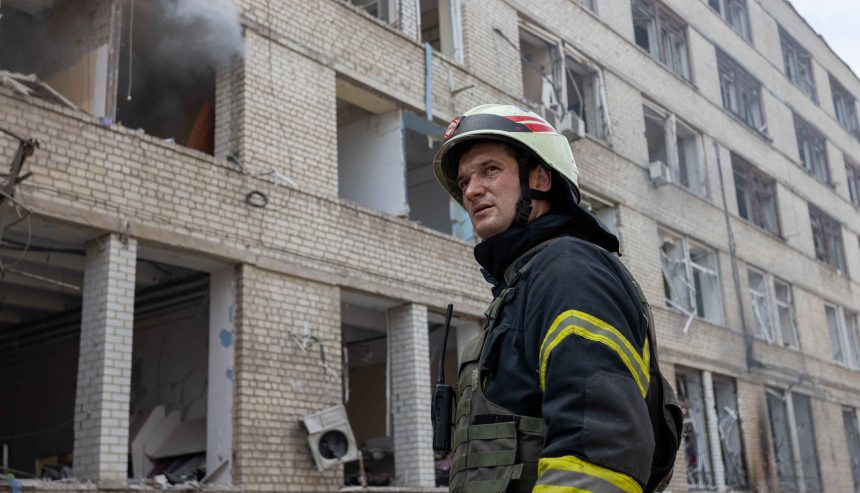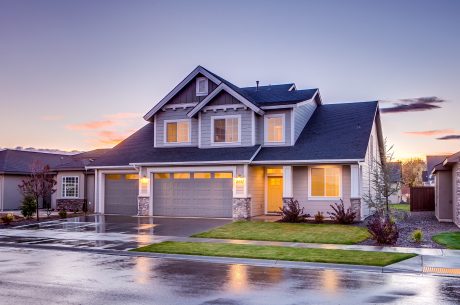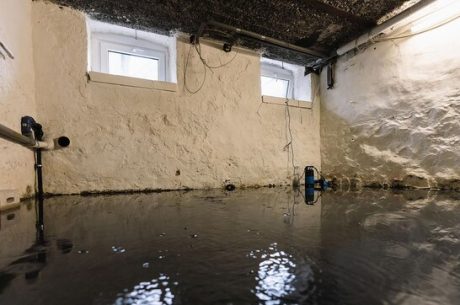Fire damage restoration is a complex process that requires skill and expertise. Every case is different, and every job needs to be handled with care. If you’re looking for the ultimate guide to commercial fire damage restoration, then this article has everything you need!
From assessing the initial damage to cleaning up afterwards, we’ll show you how to restore your premises back to its pre-fire state. By following our tips and advice, you should have no trouble getting your business back on track as soon as possible after experiencing fire damage. So let’s get started.
Definition
Fire damage is the destruction caused by fire. It can range from minor smoke and water damage to complete destruction of a property or business. Commercial fire damage, on the other hand, refers to any type of harm sustained in a commercial building due to a fire incident.
Fire restoration involves reversing this destruction and restoring the affected area back to its pre-incident condition. Commercial fire restoration includes cleaning up, repairing, replacing, and rebuilding damaged items and structures. When it comes to defining fire damage restoration, it’s all about returning an area or structure that has been destroyed by a fire back to its original state prior to the event taking place.
This process typically requires specialized equipment and personnel who are trained in dealing with disasters such as these. Fire and smoke damage restoration specialists must assess the extent of the damage accurately before beginning their work. They must also know how best to approach each type of task required for full recovery from a disaster situation.
Types Of Damage
When it comes to assessing fire damage, there are several types of destruction caused by a variety of sources. Here are the different types of damage you need to know about.
- Smoke-related damages occur when smoke and soot particles settle on furniture and other surfaces in the home or commercial space.
- Fire-induced damages refer to structural damage caused directly from the flames during the incident.
- Water-based damages can happen due to firefighters using water to extinguish the blaze.
- Heat-induced damages include warped building materials, melted items, and charred debris left behind after the fire is put out.
- Finally, chemical-based damage happens when hazardous chemicals used for eliminating fires remain on various surfaces throughout the property.
It’s essential that all these forms of destruction be identified correctly before restoration efforts begin. Doing this ensures an accurate assessment of what needs to be replaced versus restored, which ultimately helps save time and money during the process as well as reduces chances of further harm being done if something isn’t properly addressed right away.
Assessing The Damage
Assessing fire damage is a necessary step in any restoration process and should be done carefully and thoughtfully. Here are four key points to look for when assessing commercial fire damage:
- Soot Damage: Soot consists of tiny particles created by incomplete combustion during a fire. The longer soot remains on surfaces, the more difficult it can become to remove without damaging them further.
- Smoke Odor Removal: Smoke odors can linger long after a fire is extinguished if they’re not treated quickly enough. To assess this type of damage, you’ll need to check both indoor air quality as well as porous materials like fabrics, furniture, or carpets which may have absorbed smoke odor molecules over time.
- Water Damage: If firefighters used water to put out the flames, then there could be additional water damage caused by flooding or excessive moisture in ceilings and walls due to leaking pipes that needs to be addressed before any repairs can begin.
- Structural Damage: Fire-damaged structures must be inspected thoroughly for signs of structural instability such as cracks in walls or floors, weakened supports, or other safety hazards that may exist post-fire.
Repair Strategies

When it comes to restoring a property damaged by fire, repair strategies must be carefully considered. Fire damage restoration specialists must use their expertise in order to determine the most effective methods of repairing and restoring the structure.
The following table outlines some of the more common techniques used when performing fire damage repairs:
| Method | Description |
| Damage Mitigation Techniques | Steps taken before repair work begins which help prevent further destruction or contamination from smoke/soot residue |
| Fire Damage Cleanup Techniques | Procedures used during cleanup such as vacuuming soot particles, applying sealants and primers over affected surfaces charred materials etc. |
| Fire Damage Repair Methods | Specialized tools & equipment necessary for rebuilding charred walls, ceilings and floors; replacing plumbing fixtures; installing new electrical wirings etc. |
It is important that all these steps are followed to ensure proper restoration of the property. Once all repair efforts have been completed, any remaining signs of smoke or soot can be eliminated through appropriate cleaning processes. With an experienced professional overseeing the entire process, you can be certain that your home will soon look like it did prior to the incident.
Prevention Measures for Commercial Fire Damage Restoration
Now that repair strategies have been discussed, it’s time to turn our attention towards prevention measures for commercial fire damage restoration. Follow these preventive measures to ensure your commercial property’s safety.
- Fireproofing can greatly reduce the potential for a major disaster in the event of an accidental or malicious blaze.
- Structural integrity is key when considering how to best protect your property from significant destruction; if you’re uncertain about what kinds of materials will provide adequate protection, contact a qualified professional for advice and installation guidance.
- Reducing clutter and combustible items in vulnerable areas, as well as ensuring proper ventilation, are essential steps toward preventing large-scale devastation.
- Fire safety should always be taken seriously in any business environment. Early detection is one of the most vital factors; installing smoke alarms throughout all levels of the building may help identify fires while they are still small enough to contain without serious disruption or costly repairs.
- Also consider adding a reliable fire suppression system such as sprinklers – these can make all the difference between a contained incident and complete ruin.
- Finally, training staff members on emergency procedures related to fires should also be part of any responsible plan to minimize risk.
Preventative planning is essential when safeguarding against extensive damages caused by fires. By taking proactive measures like fireproofing structures, removing hazardous items from high-risk locations, properly maintaining ventilation systems and installing both fire alarms and suppression systems you not only increase your chances of avoiding catastrophe but also put yourself ahead of the curve in terms of preparing for any possible incidents which may occur in the future.
Conclusion
Commercial fire damage can be a devastating experience for any business owner. But with the right method, it is possible to minimize the damage and get back to business as soon as possible. This guide provides essential information you need to understand fire damage restoration and what steps to take.
Remember, the key to successful commercial fire damage mitigation is to act fast and work with a reputable restoration company. PuroClean of Pembroke Pines is a reliable and experienced company that can help you restore your commercial property after fire damage. Their team of experts is trained to handle any fire damage situation and will work diligently to get you back in business as soon as possible.
If you need commercial fire damage restoration services, contact PuroClean of Pembroke Pines today!




 PuroClean of Ft. Lauderdale South
PuroClean of Ft. Lauderdale South